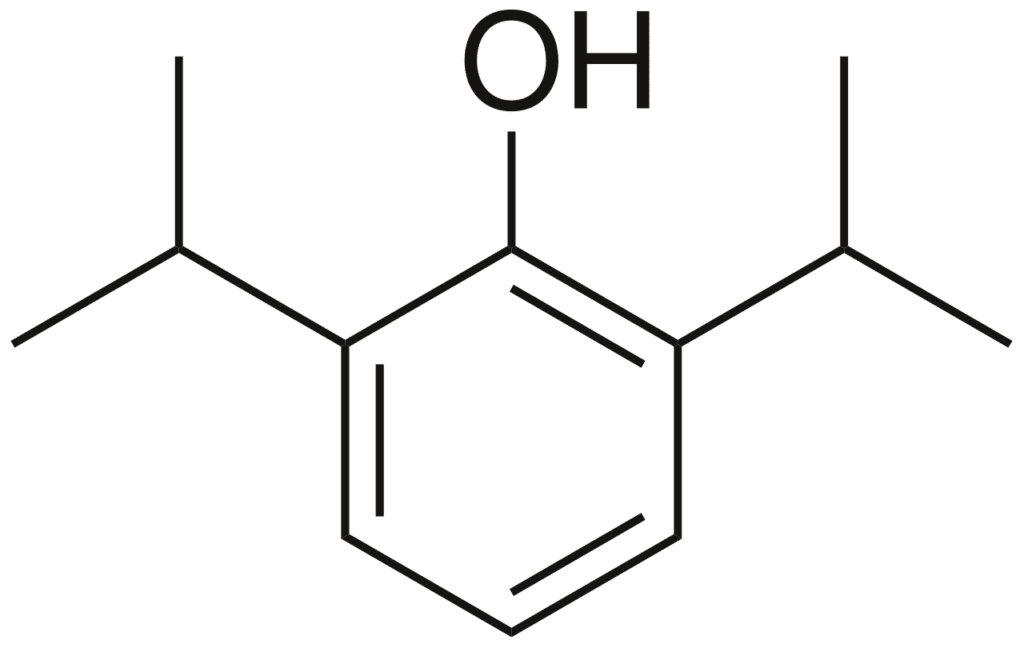
As a physician deeply involved in mental health care and innovative therapies, I’ve witnessed firsthand the profound impact of Medical Assistance in Dying (MAID) in Canada. The drugs used for MAID in Canada are not just clinical tools, but powerful agents that facilitate a dignified end-of-life experience. Below, we’ll explore the drugs used for MAID, their roles, and the implications for patients and families. Whether you’re a healthcare professional, a patient considering MAID, or a family member seeking understanding, this information is crucial for navigating this complex and emotionally-charged medical procedure.
Drugs Used in Canadian MAID Procedures
In Canadian MAID procedures, the choice of drugs and their administration method are crucial for ensuring a peaceful and dignified end-of-life experience. I’ve observed that the intravenous route is preferred by most, due to its unparalleled effectiveness and reliability. Let’s explore the main medications used in Canada and the reasons behind these selections.
Intravenous Administration for Medical Assistance in Dying
Intravenous (IV) administration is the gold standard for MAID procedures in Canada. This method ensures 100% bioavailability, meaning the entire dose of the medication enters the bloodstream immediately. For MAID, where precise dosing and rapid onset are critical, IV administration provides unmatched control and predictability.
The IV route bypasses the digestive system and other potential barriers, allowing for quick and complete absorption of the medications. This is particularly important in MAID, where the goal is to provide a swift, comfortable, and certain outcome for the patient. The immediacy of IV administration also allows healthcare providers to closely monitor and adjust the process if needed.
Primary Medications: Midazolam, Propofol, and Rocuronium
The trio of midazolam, propofol, and rocuronium forms the backbone of most MAID procedures in Canada. Each drug plays a specific role in the process, working together to ensure a peaceful passing. Midazolam, a benzodiazepine, acts as an anxiolytic and sedative, helping to calm the patient. Propofol, a powerful anesthetic, induces a deep coma-like state. Rocuronium, a neuromuscular blocking agent, causes muscle paralysis, including respiratory muscles.
These medications are carefully selected for their reliability, speed of action, and ability to work synergistically. The combination ensures that the patient quickly loses consciousness and experiences no discomfort. I’ve seen how this careful selection of drugs can provide comfort not only to the patient but also to their family members who are present during the procedure.
Roles of MAID Medications

In my experience as a physician, understanding the roles of medications used in Medical Assistance in Dying (MAID) is crucial for both healthcare providers and patients. Each drug in the MAID protocol serves a specific purpose, working together to ensure a peaceful and dignified process. Let’s examine the key roles of these medications and how they contribute to patient comfort and the overall effectiveness of the procedure.
Sedatives and Anxiolytics: Ensuring Patient Comfort

Sedatives and anxiolytics, particularly midazolam, play a vital role in MAID by alleviating anxiety and inducing relaxation. As a benzodiazepine, midazolam acts quickly on the central nervous system, helping patients feel calm and at ease. This is especially important in the moments leading up to and during the MAID procedure.
In my practice, I’ve observed how these medications significantly reduce patient distress. They help create a serene environment, allowing individuals to approach their final moments with tranquility. Families often express gratitude for this aspect, as it provides comfort knowing their loved one is at peace.
Inducing Deep Coma: The Function of Propofol

Propofol, a powerful anesthetic, is used to induce a deep coma-like state in MAID procedures. Its rapid onset and short duration of action make it ideal for this purpose. Within seconds of administration, propofol causes loss of consciousness, ensuring the patient is unaware and unable to experience any discomfort during the subsequent steps.
The use of propofol in MAID is a critical component that I’ve seen bring relief to many families, and provides these families with assurance that their loved one won’t experience any suffering. The quick-acting nature action of propofol also contributes to the overall efficiency and predictability of the MAID process.
Muscle Relaxants: The Role of Rocuronium
In my experience, the use of rocuronium is essential for the medical integrity of MAID. It provides a definitive and humane end to life, aligning with the ethical principles of euthanasia. While its effects may seem clinical, rocuronium’s role is crucial in fulfilling the patient’s wish for a dignified death.
Rocuronium, a neuromuscular blocking agent, is the final medication administered in most MAID protocols. Its primary function is to cause complete muscle paralysis, including the respiratory muscles. This step ensures a quick and peaceful passing by ceasing breathing and, consequently, cardiac function.
Additional Medications in MAID
While the primary medications in MAID are crucial, several additional drugs play important supporting roles. Being a physician who has been involved in MAID procedures, I’ve witnessed how these supplementary medications enhance patient comfort and procedure effectiveness. Let’s examine these additional drugs and their specific functions in the MAID process.
Lidocaine for Vein Numbing
Lidocaine is a local anesthetic that we often use at the start of MAID procedures. Its primary purpose is to numb the area around the injection site, typically a vein in the arm or hand. This step is crucial for patient comfort, especially for those with sensitive veins or a fear of needles.
In my experience, the use of lidocaine significantly reduces any discomfort associated with IV insertion. This small but important step helps patients remain calm and relaxed as we begin the MAID process. It’s a compassionate touch that demonstrates our commitment to patient comfort throughout the entire procedure.
Barbiturates: Pentobarbital and Secobarbital
Barbiturates like pentobarbital and secobarbital are sometimes used in MAID as alternatives to propofol. These drugs are powerful central nervous system depressants that can induce a deep coma and ultimately lead to respiratory arrest. In certain cases, particularly where propofol may not be suitable or available, barbiturates can serve as effective primary agents for MAID.
The use of barbiturates in MAID is less common in Canada compared to the standard propofol-based protocol. However, they remain an important option in our toolkit. Their longer history of use in euthanasia and physician-assisted suicide in other countries provides valuable data on their effectiveness and reliability.
Other Benzodiazepines and Neuromuscular Blocking Agents
While midazolam and rocuronium are the most commonly used benzodiazepine and neuromuscular blocking agent in MAID, other drugs in these classes may be employed based on availability or specific patient needs. For instance, diazepam or lorazepam might be used instead of midazolam, and cisatracurium or vecuronium could replace rocuronium.
These alternatives work on similar principles to their more commonly used counterparts. The choice often depends on factors such as drug availability, physician preference, or patient-specific considerations. As a practitioner, I always ensure that whichever medications we use, they meet the highest standards of efficacy and patient comfort for MAID procedures.
MAID Drug Administration Process
The drug administration process is a critical phase that requires precision, care, and adherence to strict protocols to ensure a peaceful and dignified experience for the patient. Let’s examine the key steps involved in preparing and administering MAID medications.
Preparation of Pre-filled Syringes
The preparation of pre-filled syringes is a crucial step in the MAID drug administration process. We typically prepare the syringes in advance, following strict sterility protocols. Each medication – midazolam, propofol, and rocuronium – is drawn into separate syringes in precise doses calculated based on the patient’s weight and medical history.
This preparation is usually done shortly before the procedure to maintain drug efficacy. We label each syringe clearly to prevent any mix-ups. The pre-filled syringes allow for smooth, efficient administration during the procedure, minimizing delays and ensuring patient comfort.
Sequence and Timing of Injections
The sequence and timing of injections in MAID are carefully orchestrated to ensure a peaceful passing. In my experience, we typically start with the anxiolytic, midazolam. This helps the patient relax and reduces any anxiety. After a short interval, we administer propofol, which quickly induces a deep coma-like state.
Once we confirm the patient is deeply unconscious, we administer the final medication, rocuronium. The timing between these injections is crucial. We allow enough time for each drug to take effect before proceeding to the next. This careful sequencing ensures the patient experiences no discomfort and passes peacefully.
Monitoring Patient Response during Medical Assistance in Dying
Throughout the MAID procedure, we closely monitor the patient’s response to the medications, including observing vital signs, level of consciousness, and any signs of discomfort. We then pay close attention to breathing patterns, heart rate, and muscle relaxation to ensure the medications are working the way they are intended.
This monitoring continues until the procedure is complete. It’s not just a clinical necessity; it’s a compassionate act as doctors that allows us to provide reassurance to family members who are present. We can confirm that their loved one is comfortable and at peace throughout the process. This level of care and attention is fundamental to upholding the dignity and respect central to our own ethics, and to the ethics of professional MAID.
Legal and Ethical Considerations
MAID procedures, by nature come with a complex interplay of legal and ethical considerations. The medications used in MAID are subject to strict regulations within legal framework and ongoing ethical discussions that continue to shape the use of MAID drugs in Canada.
Canadian Legislation on MAID Medications
Canadian legislation on MAID medications is comprehensive and evolving. The Criminal Code of Canada sets out the legal framework for MAID, including safeguards for its practice. These laws specify who can provide MAID and under what circumstances, directly impacting the use of MAID drugs.
Recent amendments to the legislation have expanded access to MAID, including for individuals whose natural death is not reasonably foreseeable. These changes have implications for the types and combinations of medications used, as practitioners must adapt protocols to suit a wider range of patient conditions.
Regulatory Bodies and Practice Standards
Several regulatory bodies oversee the practice of MAID in Canada, each playing a crucial role in setting standards for medication use. The Canadian Association of MAiD Assessors and Providers (CAMAP) offers guidelines on drug protocols, dosages, and administration techniques. Provincial medical regulatory authorities also provide specific guidelines for MAID practice within their jurisdictions.
These bodies work to ensure that MAID medications are used safely and effectively. They regularly update their guidelines based on emerging research and clinical experience, helping practitioners like myself stay current with best practices in MAID drug administration.
Ethical Debates Surrounding MAID Drugs
The use of drugs in MAID continues to be a topic of ethical debate within the medical community and society at large. Within my medical career, I’ve witnessed discussions ranging from the appropriateness of using certain medications to the broader implications of their availability for this purpose.
One key ethical consideration is the balance between ensuring a peaceful death and maintaining the integrity of medical practice. The use of neuromuscular blocking agents, for instance, has been debated due to their similarity to drugs used in capital punishment. However, their inclusion in MAID protocols is justified by their effectiveness in ensuring a quick and certain outcome.
Patient and Family Information
This section aims to offer guidance on what to expect during the MAID procedure, how to discuss medications with healthcare providers, and where to find support resources.
What to Expect During the MAID Procedure
The MAID procedure is designed to be peaceful and dignified. Patients and families should know that the process typically begins with the administration of an anxiolytic like midazolam. This medication helps the patient relax and reduces any anxiety. Following this, propofol is administered to induce a deep coma-like state. Finally, rocuronium is given to cause muscle paralysis, including the respiratory muscles.
Throughout the procedure, healthcare providers closely monitor the patient’s comfort and vital signs. The process is usually quick, often taking only 10-15 minutes from start to finish. Family members are allowed to be present if the patient wishes, providing comfort and support during these final moments.
Discussing MAID Medications with Healthcare Providers
Open communication with healthcare providers is crucial when considering MAID. Patients and families should feel comfortable asking questions about the medications used, their effects, and any potential side effects. It’s important to discuss any allergies or past reactions to medications, as this can influence the choice of drugs used in the MAID procedure.
Healthcare providers can explain the role of each medication, the order in which they’re administered, and how they work together to ensure a peaceful passing. This discussion can help alleviate concerns and ensure that patients and families feel fully informed about the process.
Support Resources for Families of MAID Patients
Families of MAID patients often need emotional and practical support. Many hospitals and healthcare facilities offer counselling services and support groups specifically for families going through the MAID process. These resources can provide valuable emotional support and help families navigate the complex feelings that often arise.
Additionally, organizations like the Canadian Association of MAID Assessors and Providers (CAMAP) offer informational resources for families. Local palliative care teams can also be excellent sources of support, offering guidance on end-of-life care and helping families understand the MAID process in the context of overall patient care.
Providing Clarity and Compassion: Essential Information for Patients and Families
As a physician dedicated to advancing mental health care through innovative treatments, I’ve come to understand the profound impact of Medical Assistance in Dying (MAID) on patients, families, and the medical community. The medications used in MAID are not just clinical tools, but powerful agents that facilitate a dignified end-of-life experience. Throughout this guide, we’ve explored the complex landscape of MAID medications in Canada, from the primary drugs used to the legal and ethical considerations surrounding their use. It’s crucial to remember that behind every medication and procedure is a human story – a patient seeking peace, a family grappling with difficult decisions, and healthcare providers striving to provide compassionate care.
The evolving nature of MAID in Canada reflects our society’s ongoing dialogue about dignity, autonomy, and the meaning of a good death. As we continue to refine our approach to MAID, it’s my hope that this information contributes to a deeper understanding and more informed discussions among patients, families, and healthcare providers. In my years of practice, I’ve seen how knowledge can empower patients and families during challenging times. Understanding the medications used in MAID can help alleviate fears, clarify expectations, and foster a sense of control in a situation often marked by uncertainty. The landscape of end-of-life care is constantly evolving, and it’s our responsibility as healthcare providers to stay informed and provide the best possible care to those who choose this path. Remember, MAID is not just a medical procedure – it’s a profoundly human experience. By understanding the process and medications involved, we can better honour those who choose this option, ensuring that their final moments are as peaceful and comfortable as possible.
FAQ
MAID protocols typically use midazolam for relaxation, propofol to induce deep unconsciousness, and rocuronium to stop breathing, ensuring a peaceful and dignified passing.
Medications are administered sequentially via injection: a sedative first, followed by an anesthetic, and finally a muscle relaxant. Each step is carefully timed to maintain comfort.
Yes, family members are usually welcome if the patient wishes. Their presence can offer comfort, and healthcare providers ensure a calm, dignified process for everyone involved.
Families can access counseling, support groups, and resources from organizations like CAMAP. Local palliative care teams also offer emotional and practical guidance during this time.
About the Author

Dr. Mario Nucci MD CCFP is a licensed Family Physician with a passion for mental health and the development of new therapies. He is actively engaged in research with a faculty associate professorship at Northern Ontario School of Medicine, and research collaborations with the University of Ottawa, University of Calgary, Lakehead University, Concordia University and Vancouver Island University.
Dr. Nucci is the founder of Bay and Algoma Health Centre in 2019, a walk-in and addiction medicine clinic. He founded the Canadian Centre for Psychedelic Healing in 2019, now operating as Field Trip Health, providing cutting edge mental health care in Toronto, Montreal, Vancouver, Ottawa, Hamilton, Kitchener-Waterloo, Thunder Bay, Sault Ste. Marie, and at-home.